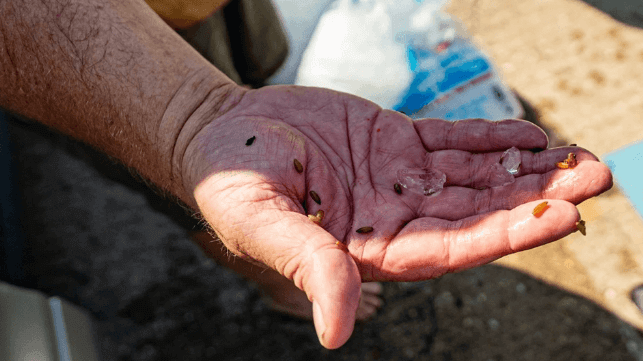Michigan Distiller Uses Great Lakes Shipwrecks to Create Historic Flavors

A group of distillers and scientists have tapped the holds of a Great Lakes shipwreck in an attempt to revive a 19th-century varietal of rye - and bring back a thriving regional whiskey industry.
Mammoth Distilling, a Michigan-based whiskey maker and importer, wants to tap the state's maritime heritage to produce enticing spirits literally steeped in the past. It has several ventures aimed at incorporating local wrecks into its product lineup. Last year, Mammoth said that it would work with wreck-hunter Ross Richardson to raise a part of the lost steamer Westmoreland and turn a section of the hull - old-growth white oak - into whiskey barrel staves. "Mammoth would like to produce a whiskey flavored by the shipwreck wood . . . to be able to smell and taste history," Richardson told local media last year. "The idea is to take forgotten wood on the bottom of the lake and share the story of this wreck."
The permits for that novel salvage project are still in process, but in the meantime, Mammoth has another wreck-related venture: it has sourced historic rye seeds from a lost schooner's holds. The company secured permission to salvage a sample of the rye cargo aboard the James R. Bentley, a schooner that went aground and sank in a storm on Lake Huron in 1878. Rye is a key feedstock for whiskey distillers, and Mammoth wanted to see if it could acquire seed material that would allow it to recreate the whiskeys of 19th-century Michigan.
The salvage rights to the James R. Bentley belong to wreck-hunter Paul Ehorn, who granted Mammoth a rare privilege: the legal right to recover objects from the wreckage. In September, a dive team visited the wreck of the Bentley and recovered samples of rye seeds from the cargo hold. Mammoth's owner put the valuable seeds on ice and drove them straight to the laboratory of MSU Associate Professor Eric Olson, an expert in grain genetics.
At the lab, Olson's team selected potentially useful seeds and made a series of sophisticated attempts to get them to germinate. None would grow, suggesting that they had been underwater too long to be viable - but they will still yield their secrets, Olson said.
"Once we get the DNA, we can sequence it and figure out what this rye is, or what it’s related to," Olson said. "We can revive the genes that were carried in the seeds and use modern genome sequencing techniques to assemble parts of the genome. We’ll be able to sequence the chromosomes of this rye and transfer those chromosome segments into a modern rye variety, essentially reviving a historic rye."
While that project is under way, Mammoth has a related product on offer. The firm sells a Canadian rye whiskey that has been allowed to soak with oak staves made from the wreck of the Bentley, starting at $515 per bottle.
